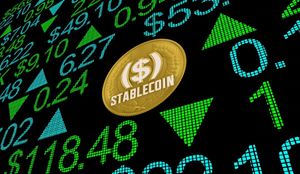
November 24, 2025, witnessed a nuanced performance across the precious metals market, as gold, silver, platinum, and palladium responded to a complex interplay of monetary policy expectations, currency fluctuations, and inherent supply-demand dynamics. While gold experienced a divergent trend with declines in India and a modest rise in the U.S., silver also exhibited regional variations. In contrast, both platinum and palladium demonstrated notable gains, signaling underlying strength in industrial demand and specific market fundamentals. This mixed bag of movements underscores a cautious market sentiment, with investors closely scrutinizing upcoming economic indicators and central bank pronouncements for clearer direction.
The immediate implications highlight the sensitivity of these commodities to global economic health and central bank dovishness. Expectations surrounding a potential December interest rate cut by the US Federal Reserve have been a significant driver, creating both tailwinds and headwinds. A stronger US dollar, however, continued to exert pressure on dollar-denominated assets like gold, while industrial demand provided a robust floor for platinum and palladium. This daily snapshot reveals a market in flux, poised for further volatility as key economic narratives unfold.
Detailed Market Movements and Driving Factors
On November 24, 2025, the precious metals complex presented a fascinating picture of contrasting fortunes. Gold, traditionally a safe-haven asset, displayed regional disparities. In India, 24K gold prices saw a decline, settling around ₹12,513 per gram, a notable decrease from the previous day. This downward trend was attributed to softening global cues and easing domestic demand following recent highs. Conversely, in the United States, gold (XAU) edged higher, trading around $4,080.63 per ounce, reflecting a slight uptick despite some reports indicating a marginal dip in spot prices. This divergence underscores the influence of local demand dynamics and currency strength.
Silver (XAG) mirrored gold's regional split, softening to ₹163 per gram in India, marking a marginal decline. Globally, however, silver saw a rise to $50.49 USD/t.oz, recovering from a sharp decline in the preceding week. The metal spent the early European session consolidating just under the $50 mark, with its long-term ascending trendline from early November remaining intact. This indicates a battle between short-term selling pressure and underlying bullish conviction.
Platinum (XPT) emerged as a strong performer, experiencing a significant increase to $1,543.80 USD/t.oz, with some spot prices even touching $1,550.94 per ounce. This robust rebound was largely fueled by dovish comments from a senior US Federal Reserve official, which intensified expectations for a rate cut next month. Such a move typically enhances the attractiveness of non-yielding assets. Palladium (XPD) also recorded gains, rising to $1,394 USD/t.oz, with live spot prices around $1,417.52 USD per ounce. Its performance, closely tied to industrial demand, particularly from the automotive sector, benefited from the broader positive sentiment and expectations of easing financial conditions.
The primary stakeholders and key players influencing these movements include the US Federal Reserve, whose monetary policy signals—especially regarding interest rate cuts—are paramount. Central banks globally continue to be significant buyers of gold, providing a fundamental demand floor. Major mining companies in regions like South Africa (for platinum and palladium) and Russia (for palladium) are crucial supply-side players, with their operational stability directly impacting market availability. Additionally, large institutional investors and retail buyers contribute to demand, reacting to economic data, inflation concerns, and geopolitical developments. The day's events highlight the intricate web of macro-economic factors, speculative trading, and fundamental supply-demand dynamics that collectively shape the precious metals market.
Companies Poised to Win or Lose
The mixed movements in the precious metals market on November 24, 2025, present a varied landscape for public companies involved in mining, refining, and trading these commodities. Companies with significant exposure to platinum and palladium mining are likely to be among the immediate beneficiaries. For instance, major South African platinum group metals (PGM) producers like Anglo American Platinum (JSE: AMSP) and Impala Platinum Holdings (JSE: IMP), or Russian giant Norilsk Nickel (MCX: GMKN), which is a major palladium producer, could see positive investor sentiment due to the upward price trajectory of these industrial metals. Increased prices directly translate to higher revenues and potentially improved profit margins for these miners, especially if their production costs remain stable.
Conversely, companies heavily reliant on gold and silver mining might experience more nuanced effects. While the global rise in silver and the US uptick in gold could benefit North American miners such as Barrick Gold Corporation (NYSE: GOLD), Newmont Corporation (NYSE: NEM), or Pan American Silver Corp. (NASDAQ: PAAS), the decline in Indian demand and prices could signal broader weakness if it persists or spreads. Gold and silver refiners and dealers, particularly those with significant operations in markets experiencing price declines, could face reduced trading volumes or narrower margins. Furthermore, companies that utilize these metals in manufacturing, such as jewelry makers or electronics firms, might see their input costs fluctuate, impacting their profitability depending on their hedging strategies.
The long-term outlook for these companies will hinge on the sustained direction of precious metal prices. For platinum and palladium miners, continued industrial demand, particularly from the automotive sector for catalytic converters and emerging hydrogen economy applications for platinum, will be critical. The structural supply deficit in platinum, as noted by industry reports, could provide a strong tailwind for producers. For gold and silver miners, the ongoing safe-haven appeal and central bank buying will be crucial for gold, while silver will benefit from both investment demand and its increasing use in solar panels and electronics. Companies with diversified portfolios across different precious metals, or those with strong cost control and efficient operations, are better positioned to navigate the inherent volatility of this market.
Wider Significance and Market Implications
The daily movements in the precious metals market on November 24, 2025, are more than just a snapshot; they are indicative of broader industry trends and significant macroeconomic shifts. The divergence in gold prices, particularly between Indian and global markets, highlights the increasing fragmentation and regionalization of demand drivers. While Western markets often react to monetary policy and geopolitical risks, Asian markets, especially India, are heavily influenced by cultural demand for jewelry and local economic conditions. This trend suggests that a one-size-fits-all analysis of gold is becoming less effective, requiring investors to consider localized factors.
The robust performance of platinum and palladium, despite their industrial applications, points to the enduring strength of the automotive sector's demand for catalytic converters and a potential pivot in investor sentiment towards industrial precious metals. Platinum, in particular, benefits from a projected structural supply shortage, a trend that has been developing over the past few years. This scarcity, coupled with increasing demand from new applications like the hydrogen economy and fuel cells, positions platinum as a metal with significant long-term growth potential. The ongoing US-China competition for platinum resources also underscores its strategic importance and could lead to reshaped supply chains and increased price volatility.
From a regulatory and policy perspective, the market is highly sensitive to central bank rhetoric, especially from the US Federal Reserve. Expectations of interest rate cuts, even if just speculative, can significantly alter investment flows into non-yielding assets. Furthermore, environmental regulations globally, particularly those related to vehicle emissions, directly impact the demand for platinum and palladium in catalytic converters. Any tightening of these standards would further bolster demand, while a rapid global shift to electric vehicles (EVs) poses a long-term challenge, though the transition is proving slower and more complex than initially anticipated. Historically, periods of economic uncertainty and dovish monetary policies have often favored precious metals, providing a precedent for the current market's underlying resilience despite short-term fluctuations.
What Comes Next: Navigating Future Scenarios
Looking ahead, the precious metals market is poised for continued volatility, driven by a confluence of short-term economic data and long-term structural shifts. In the short term, the market will keenly watch for upcoming statements from the US Federal Reserve regarding interest rates. A confirmed December rate cut could provide a significant bullish impetus for gold and silver, making non-yielding assets more attractive relative to interest-bearing alternatives. Conversely, any hawkish signals or stronger-than-expected economic data could strengthen the US dollar, exerting downward pressure. Geopolitical developments, such as ongoing conflicts or trade tensions, will also continue to fuel safe-haven demand for gold.
In the long term, several strategic pivots and adaptations will be required from market participants. For platinum and palladium, the pace of the global transition to electric vehicles remains a critical factor. While EVs reduce demand for internal combustion engine (ICE) catalytic converters, platinum's emerging role in hydrogen fuel cells and electrolyzers presents a new growth avenue. Mining companies might need to diversify their operations or invest more heavily in research and development for new applications of their metals. For gold and silver, the persistent concerns over global debt, inflation, and currency debasement are likely to maintain their appeal as hedges and stores of value. Central bank purchasing trends will also be a key indicator of long-term demand.
Potential market opportunities may emerge from increased industrial demand for silver in solar technology and electronics, as well as platinum in the burgeoning hydrogen economy. Investors might look for opportunities in companies that are innovating in these sectors or those with strong environmental, social, and governance (ESG) credentials, aligning with broader investment trends. Challenges include potential oversupply in certain metals (like palladium, if EV adoption accelerates significantly) and the inherent price volatility that requires robust risk management strategies. Potential scenarios range from a sustained bull run for precious metals if global economic uncertainty persists and interest rates decline, to periods of consolidation or correction if economic growth stabilizes and risk appetite returns.
Comprehensive Wrap-Up and Investor Outlook
The daily market movements on November 24, 2025, underscore the dynamic and multifaceted nature of the precious metals sector. Key takeaways include the divergent performance of gold and silver across different geographies, highlighting the importance of regional demand factors and currency strength. The notable gains in platinum and palladium, driven by industrial demand and specific supply-side factors, suggest a potential shift in investor focus towards metals with strong industrial applications and supply deficits. The overarching theme remains the significant influence of central bank monetary policy, particularly the US Federal Reserve's stance on interest rates, which continues to be a primary catalyst for price action.
Moving forward, the precious metals market is expected to remain a complex environment, influenced by a delicate balance of macroeconomic indicators, geopolitical events, and fundamental supply-demand dynamics. While gold's role as a safe haven is likely to persist amid global uncertainties, its short-term movements will be heavily dictated by interest rate expectations and dollar strength. Silver, with its dual role as an investment asset and industrial metal, offers both opportunities and higher volatility. Platinum appears poised for sustained growth due to its structural supply deficit and expanding applications, particularly in the green energy sector. Palladium, while benefiting from current industrial demand, faces long-term headwinds from the EV transition, necessitating careful monitoring.
Investors should watch for several key indicators in the coming months. These include inflation data, which could reignite demand for precious metals as an inflation hedge; further pronouncements from major central banks regarding monetary policy; and developments in geopolitical hotspots. Additionally, tracking industrial reports on automotive production, solar panel manufacturing, and hydrogen economy advancements will provide insights into the fundamental demand for platinum and silver. Diversification within the precious metals complex, considering both safe-haven and industrial metals, along with a keen eye on global economic trends, will be crucial for navigating this evolving market.
This content is intended for informational purposes only and is not financial advice





